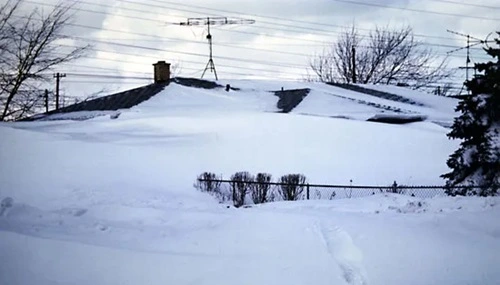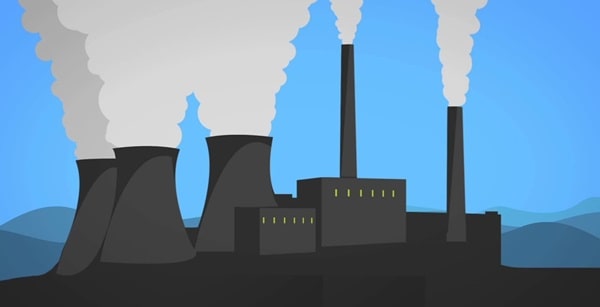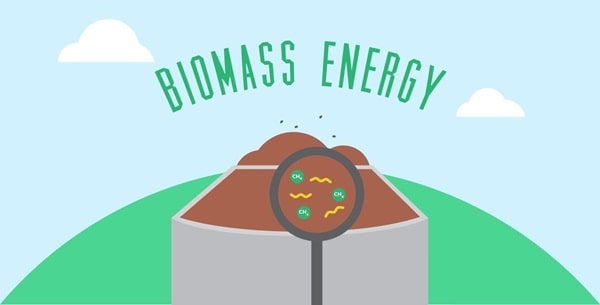Blizzards are one of nature’s most powerful winter storms, with their intense snowfall, frigid temperatures, and fierce winds. While many people associate blizzards with cancelled flights and cozy snow days, there’s a lot more to these winter wonders than meets the eye. From record-breaking snowfalls to surprising scientific facts, here are over 10 fun and fascinating facts about blizzards that reveal the full force of these snowy giants.

1. A Blizzard Isn’t Just Heavy Snowfall
To officially be classified as a blizzard, a snowstorm has to meet specific conditions. The National Weather Service (NWS) defines a blizzard as a storm with winds of at least 35 mph, visibility of a quarter mile or less, and these conditions must persist for at least three hours. Snowfall alone doesn’t make a blizzard; it’s the combination of intense wind and poor visibility that sets blizzards apart from regular snowstorms.
2. Blizzards Can Occur in Unexpected Places
While we usually associate blizzards with cold, northern areas, they can actually occur in places not typically known for snowy weather. For instance, blizzards have been reported as far south as Texas and parts of the southeastern United States. These “southern blizzards” are rare but can be especially disruptive in areas unaccustomed to such extreme winter conditions, often leading to widespread power outages and transportation issues.
3. The Great Blizzard of 1888 Was a Defining Storm in U.S. History
The Great Blizzard of 1888, also known as the “Great White Hurricane,” is one of the most famous blizzards in U.S. history. It struck the Northeast in March 1888 and dumped up to 55 inches of snow, with drifts reaching up to 50 feet high. Winds topped 45 mph, creating conditions that paralyzed cities, disrupted railroads, and even buried entire houses. This blizzard highlighted the need for underground infrastructure, leading to New York City’s decision to build its famous subway system.
4. Blizzards Are Common in “Blizzard Alley”
The region known as “Blizzard Alley” encompasses parts of the northern Great Plains, including North Dakota, South Dakota, and parts of Minnesota, Nebraska, and Montana. These areas experience frequent blizzards due to a combination of flat terrain, cold Arctic air, and moisture from the Pacific. Blizzard Alley sees some of the most intense winter storms in the United States, often bringing whiteout conditions and dangerously low wind chills.
5. The Record for Snowfall in a Single Blizzard
One of the most intense blizzards in terms of snowfall happened in the Sierra Nevada mountains in 1959. The storm dumped an astonishing 189 inches of snow over the course of several days! This staggering amount of snow highlights the massive power that winter storms can bring, especially in mountainous regions where moisture-laden air rises, cools, and releases heavy precipitation as snow.
6. Blizzards Can Cause “Whiteout” Conditions
Whiteouts are one of the most dangerous aspects of blizzards. During a whiteout, heavy snow and strong winds reduce visibility to near zero, making it impossible to see more than a few feet ahead. This disorienting effect can cause people to lose their way, even in familiar areas. Whiteouts are especially hazardous for drivers and can lead to pile-ups on highways and major road closures.
7. Snow Drifts Can Reach Astonishing Heights
Blizzards often create enormous snow drifts due to strong winds, which blow and pile up snow into massive heaps. Snow drifts can reach incredible heights; during severe blizzards, they can rise to over 30 feet. These drifts can block roads, bury vehicles, and make it difficult to access buildings. In some cases, snow drifts can even cover houses or entire neighborhoods, trapping residents until help arrives.
8. Blizzards Can Lead to “Frost Quakes”
Extreme cold, especially following a blizzard, can lead to a rare phenomenon known as a frost quake, or cryoseism. Frost quakes occur when water trapped in the ground freezes and expands quickly, causing the ground to crack and create loud, thunder-like noises. Frost quakes are more likely to happen after heavy snow that soaks into the ground and then rapidly freezes due to plummeting temperatures, leading to these spontaneous mini “earthquakes.”
9. Thundersnow: When Thunder Accompanies Snowfall
Thundersnow is a rare weather event that combines snow with the phenomenon of thunder and lightning. Thundersnow occurs when there is strong upward movement in the atmosphere, which creates the same conditions that produce thunderstorms, but with snow instead of rain. Thundersnow is often accompanied by intense snowfall rates, sometimes as much as 2–4 inches per hour, adding a dramatic element to an already intense storm.
10. Blizzards Can Cause “Snow Blindness”
Snow blindness, or photokeratitis, is a painful condition caused by overexposure to the sun’s UV rays reflecting off the snow. In a blizzard, this effect can be intensified when the sunlight bounces off fresh snow and blindingly bright light. Without protective eyewear, people can experience temporary vision loss or intense eye discomfort. This is one reason why it’s essential to wear UV-protective sunglasses in snowy environments.
11. Antarctica is the Most Blizzard-Prone Place on Earth
Antarctica is no stranger to extreme winter weather and experiences some of the harshest blizzards on the planet. Wind speeds in Antarctica can exceed 200 mph, and whiteout conditions are common. These intense blizzards make it one of the most inhospitable places for human life. The temperatures in Antarctica can also plunge to nearly -100 degrees Fahrenheit, and the blizzards there can last for days, making survival nearly impossible without proper shelter and supplies.
12. Blizzards Often Lead to Avalanche Risks in Mountainous Areas
In mountainous regions, blizzards can significantly increase the risk of avalanches. Heavy snowfall and strong winds create layers of snow with different densities, leading to unstable snowpacks. When additional snowfall or a disturbance, such as a skier or snowmobiler, causes this unstable snow to shift, it can trigger an avalanche. This is why, after a blizzard, avalanche warnings are often issued to protect those in mountainous areas.
13. Blizzards Can Create a “Wind Chill” Effect That Feels Much Colder
Blizzards often come with a phenomenon known as wind chill, which makes temperatures feel even colder than the actual air temperature. Wind chill occurs because cold winds strip away the thin layer of warmth that our bodies naturally produce, making it feel colder than it actually is. During a blizzard, the wind chill can make temperatures feel like they are below -30°F, which can lead to frostbite in minutes if skin is exposed.
14. Record for the Coldest Blizzard Ever Recorded in the U.S.
The coldest blizzard on record in the United States occurred in North Dakota during the winter of 1936. Temperatures fell to -60°F with wind chill factors even lower. This blizzard was part of the “North American Cold Wave” and affected multiple states, leading to widespread freezing, power outages, and dangerous travel conditions. This intense cold shows just how extreme winter weather can become in certain regions of the U.S.
15. Some Blizzards Create Stunning Ice Formations
When blizzards hit with intense wind, snow, and freezing rain, they can create beautiful and bizarre ice formations. Known as “snow rollers” or “ice volcanoes,” these formations occur when strong winds push snow across a smooth surface, creating a rolling snowball effect. In certain conditions, these formations can build up to look like small snow “tornadoes” or ice structures, turning a blizzard’s aftermath into an artistic winter landscape.
From record-breaking snowfall to the danger of whiteouts, blizzards are one of the most awe-inspiring and powerful natural phenomena. Understanding the science and impact of blizzards helps us appreciate their beauty while respecting the challenges they bring. Whether it’s watching a blizzard from the warmth of home or braving the outdoors in the aftermath, these amazing facts about blizzards reveal just how complex and fascinating winter storms can be. While they can create beautiful, serene landscapes, it’s essential to stay safe and prepared when one hits, as blizzards are as formidable as they are mesmerizing.


